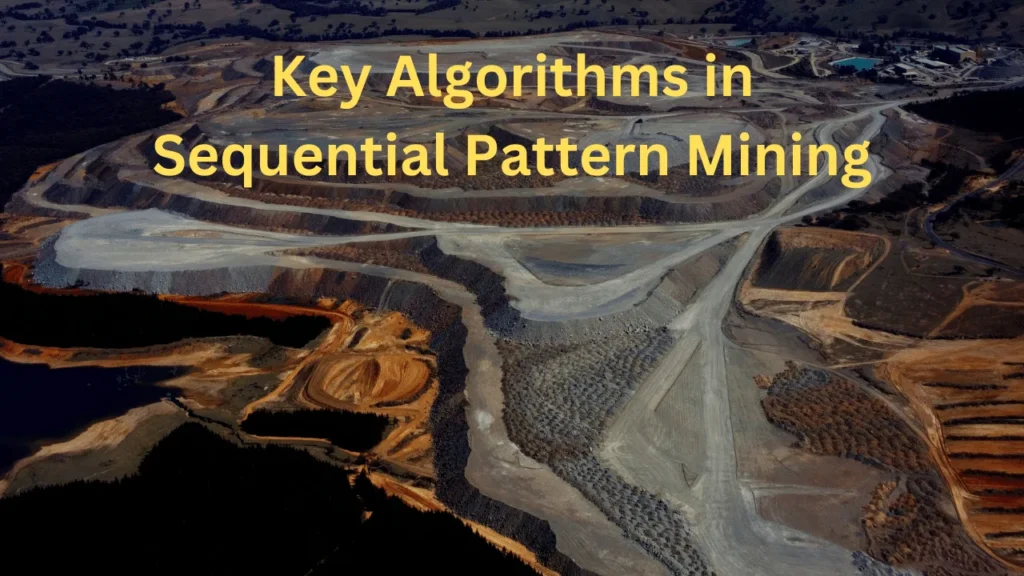The goal of the sophisticated data mining method known as Sequential Pattern Mining (SP mining) is to reveal previously unseen patterns in hierarchical datasets. This approach helps analysts in many different fields anticipate trends, improve the customer service they provide, and make better decisions. Organizations can gain a competitive edge and fuel innovation by learning SP mining and putting it into practice with their data.
Understanding the Essence of SP Mining
What is SP Mining?
When the sequence of events or items is important in a dataset, SP mining aims to find and extract those sequences. This method is essential for understanding the regularity and structure of data, which can encompass anything from online clickstreams to retail transaction sequences.
Core Algorithms and Techniques
For SP mining to work efficiently, a number of algorithms are required. These include PrefixSpan, AprioriAll, and GSP (Generalized Sequential Pattern). In order to lessen the computational load, these algorithms efficiently handle data scalability and zero in on promising pattern extensions.
Applications Across Industries
Because of its adaptability, SP mining finds use in many different fields, including bioinformatics, e-commerce, and healthcare, where it helps inform both strategic business decisions and scientific breakthroughs.
Future and Trends
The future of SP mining is bright, thanks to the exponential growth of data, as it will incorporate more advanced algorithms and integrate with AI to improve predictive analytics.
Key Algorithms in Sequential Pattern Mining

Understanding the AprioriAll Algorithm
All patterns produced by this algorithm are guaranteed to be statistically significant as it finds frequently occurring itemsets and expands them to larger ones. In smaller datasets, it excels because it is easy to understand and use.
Efficiency of the GSP Algorithm
For more complex sequence databases, GSP is a good generalization of the AprioriAll method that takes time constraints and other complications into account.
Advantages of the PrefixSpan Algorithm
By drastically cutting down on the amount of candidate sequence generation required, PrefixSpan greatly improves performance. To make the original database more manageable and mineable, it is partitioned into smaller subsets.
Comparing Pattern Growth Strategies
Pattern growth is preferred because it efficiently finds common sequences without generating candidates. This method is both scalable and effective in directly building the frequent patterns.
Role of Data Pruning Techniques
Improving efficiency by focusing only on potentially relevant patterns and removing unnecessary data early in the mining process speeds up the overall process.
Practical Applications and Case Studies
Retailers can optimize inventory management and tailor marketing strategies with the help of Market Basket Analysis in Retail SP mining, which helps them understand purchase patterns over time.
Enhancing Fraud Detection Systems
Sp mining can greatly decrease the risk of financial loss by analyzing sequences of transactions and detecting anomalies or potential fraudulent activity.
Developing Personalized Recommendation Systems
SP mining improves user engagement and experience by analyzing sequences of consumer behavior to suggest products that are more likely to be purchased.
Biological Sequence Analysis in Genomics
Medical research and treatment strategies are advanced through the use of SP mining in bioinformatics, which helps understand DNA, RNA, and protein sequences.
Improving Web Navigation Paths
Businesses can increase customer happiness and loyalty by studying how people navigate their websites and making usability and design improvements.
Challenges and Future Directions in SP Mining

Addressing Scalability and Performance Issues
For SP mining algorithms to remain performant, they need to adapt to ever-increasing dataset volumes and complexity.
Integrating with Other Data Mining Techniques
Expanding our knowledge of data patterns and insights can be achieved by integrating SP mining with other analytical methods.
Expanding to Real-Time Data Analysis
Businesses and organizations will be able to act swiftly on the data they collect with the help of future advancements like real-time SP mining.
Adopting Machine Learning and AI
A more efficient and accurate method of automating pattern discovery and prediction could be achieved by combining SP mining with machine learning.
Ensuring Data Privacy and Security
Strong rules and regulations are required to ensure the security and privacy of data, which is especially important in SP mining because of the sensitive nature of the information it deals with.
Advanced Techniques in SP Mining
Temporal Data Analysis
Discovering trends and patterns across time is the main goal of temporal data analysis. Organizations can make better decisions by applying SP mining to temporal data and learning about the changing trends and behaviors.
Seasonality Detection
Increased sales during the holidays are just one example of the periodic patterns that seasonality detection can uncover in data. Businesses can adjust their strategies based on the patterns that SP mining helps them identify.
Trend Analysis
Data points’ changes over time are investigated in trend analysis. Strategic planning is aided by SP mining, which allows organizations to predict future trends using historical sequences.
Event Correlation
Sequences of events that happen frequently together are connected by event correlation. SP mining reveals these connections, illuminating the interdependencies in a company’s data.
Optimizing Customer Behavior Analysis
Analyzing Purchase Sequences
Customers’ buying behavior can be better understood by analyzing the sequences in which they make purchases. SP mining is useful for identifying these sequences, which lets stores personalize their ads.
Cross-Selling Opportunities
SP mining can help you find patterns in customer purchasing behavior that can lead to cross-selling and overall sales growth.
Customer Segmentation
Using SP mining to analyze purchase sequences, targeted marketing strategies can be implemented based on customer buying patterns.
Customer Journey Mapping
Businesses can learn more about their customers’ actions from discovery to purchase completion by creating a customer journey map. SP mining improves customer experience strategies by providing a detailed view of these sequences.
Enhancing Web Navigation Path Analysis
User Behavior Analysis
You can learn a lot about people’s web browsing habits by looking at the order in which they visit different pages. SP mining is useful for finding typical user paths through a website, which can lead to better layout and design.
Identifying Popular Paths
With the use of SP mining, web designers can learn which paths users take most often, which in turn allows them to improve the user experience.
Detecting Drop-off Points
The purpose of SP mining is to find out what parts of a website might use some work in order to keep visitors from leaving.
Personalized Content Recommendations
SP mining has the ability to personalize content suggestions according to users’ navigation patterns, which can increase their engagement and happiness.
Data Preprocessing
Data Cleaning
Reliable pattern generation relies on SP mining using accurate and error-free sequences, which can only be achieved through data cleaning.
Handling Missing Data
When data is missing, it can significantly alter the outcomes of an analysis. To guarantee the sequences’ integrity, effective preprocessing methods fill in or account for gaps.
Data Transformation
An important first step in SP mining is cleaning up the raw data. As part of this process, we normalize the values and convert the data types so that the sequences are consistent.
Noise Reduction
To improve the quality and accuracy of the patterns discovered by SP mining, it is necessary to reduce noise by filtering out irrelevant or redundant information.
Predictive Analytics Using SP Mining Forecasting Future Events
Using SP mining, predictive analytics can foretell future events from sequences of historical data, which helps with proactive decision-making.
Demand Prediction
Effective inventory management is made possible through SP mining’s analysis of historical sales data sequences, which helps predict future demand.
Risk Management
SP mining-based predictive models can analyze past sequences to spot possible threats, giving businesses a head start in preparing for them.
In order to proactively implement retention strategies, firms can use customer retention SP mining to predict customer churn by identifying sequences that lead to drop-offs.
Innovative Uses
Healthcare Applications
To help with personalized medicine and better patient care, SP mining can examine patient records to find trends in treatment outcomes.
Disease Outbreak Prediction
Medical record sequences can be analyzed using SP mining to forecast disease outbreaks and intervene in a timely manner.
Treatment Pathways
SP mining reveals typical patient treatment sequences, which improves healthcare protocols by shedding light on successful treatment pathways.
Energy Consumption Analysis
Energy companies can use SP mining to forecast consumption trends and optimize resource allocation by analyzing usage patterns.
Smart Grid Optimization
By analyzing consumption sequences, SP mining aids in smart grid management and optimization, which in turn leads to efficient energy distribution.
Renewable Energy Forecasting
Sustainable energy planning can benefit from SP mining’s ability to forecast the supply and demand for renewable energy sources by analyzing past weather and usage data.
FAQs
What is SP mining?
SP mining, or sequential pattern mining, is a technique used to identify patterns and sequences within ordered datasets.
How does SP mining benefit retail?
SP mining helps retailers understand customer purchase behaviors, enabling targeted marketing and inventory management.
Can SP mining be used in healthcare?
Yes, SP mining can analyze patient data to identify treatment patterns and predict disease outbreaks.
What algorithms are commonly used in SP mining?
Common algorithms include AprioriAll, GSP, and PrefixSpan, each suited for different types of data and sequence complexities.
Is SP mining applicable to real-time data?
While traditionally used for historical data, advancements are making SP mining increasingly applicable to real-time data analysis.
Also Read: Web Structure Mining in Data Mining
Conclusion
When faced with the difficulties posed by large and complicated datasets, data analysts can rely on Sequential Pattern Mining. The capabilities of SP mining will continue to expand with the advancement of technology, allowing us to accomplish more with data analysis. Continuous improvement of algorithms and integration with AI and ML should further increase SP mining’s potential, solidifying its position as a frontrunner in data-driven decision-making.

Brandy Stewart, an enchanting wordsmith and seasoned blogger, weaves compelling narratives that transport readers to uncharted territories. Infused with perceptive viewpoints and dynamic storytelling, Doris exhibits a command of language that enthralls both hearts and minds, leaving a lasting mark on the literary panorama.

